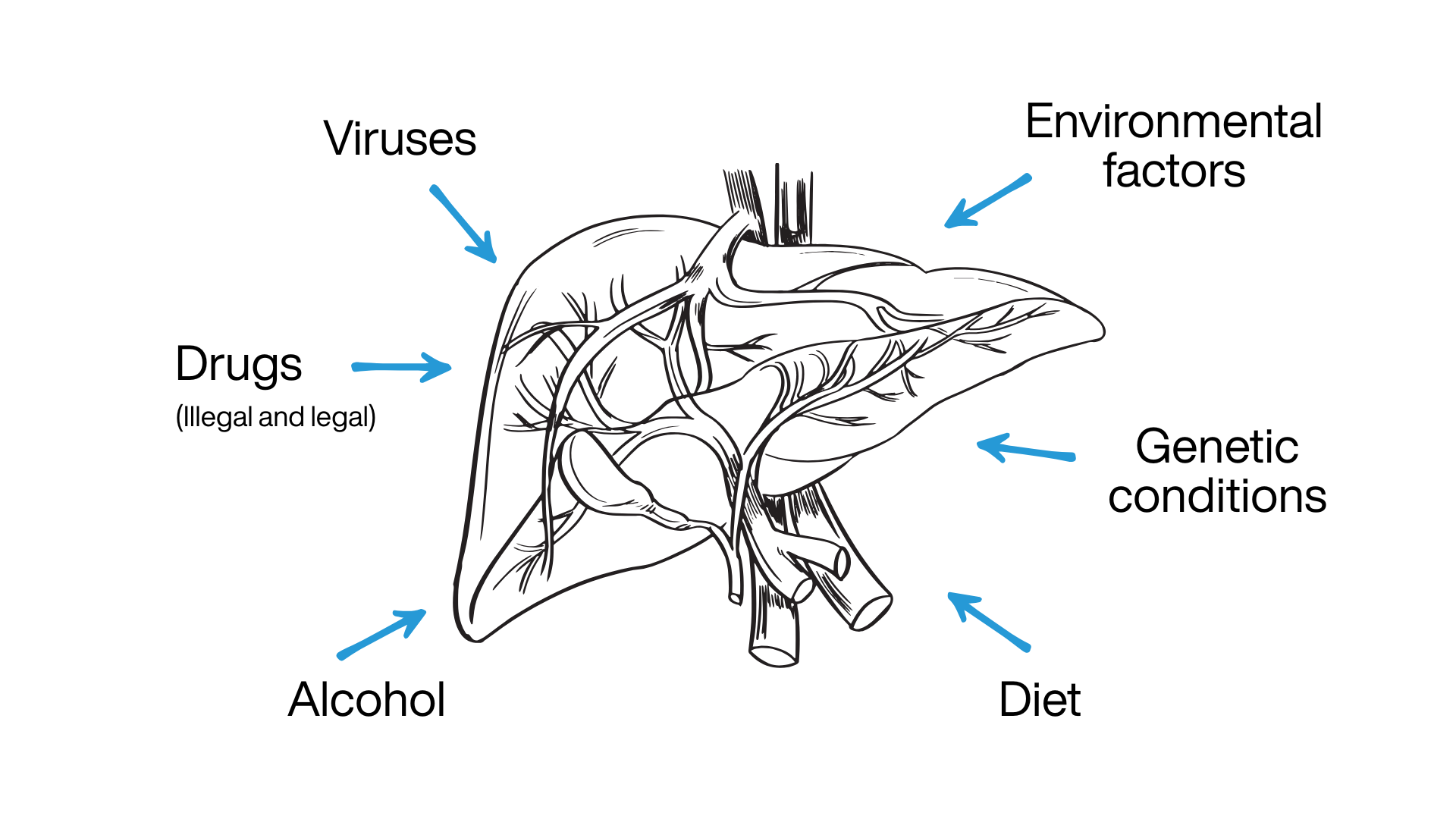Hepatitis
What is hepatitis?
Hepatitis means inflammation of the liver.
Hepat/o- derives from Greek and means liver.
-itis is the medical suffix for inflammation.
What causes hepatitis?
Hepatitis, or inflammation of the liver, can have different causes.
At HepatitisWA our main focus is caring for people living with viral hepatitis. Viral hepatitis is inflammation of the liver caused by viruses that can live in the liver and damage the liver. The main hepatitis viruses are hepatitis A, hepatitis B, and hepatitis C. Click below to learn about each of these viruses.


